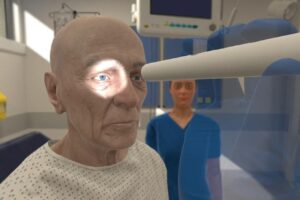The Kobayashi Maru – Lessons on Simulation from Star Trek
In the lore of science fiction, the story of the Kobayashi Maru stands out from the Star Trek universe. The simulation scenario, which comprises the opening scenes of the 1982 Star Trek II movie, places the trainee in command of a Federation Starship whose objective is to rescue the crew of the civilian starship Kobayashi Maru which is under attack by enemy Klingon warships in their territorial space. Any decision made by the trainee is sure to result in loss of life and destruction, a “no win” scenario that is meant to test the character of the commander, rather than his skill at the helm.
Captain James T. Kirk, the fictional commanding officer of the equally fictional Starship Enterprise, famously cheated on this crisis management exercise during his years as a Starfleet Academy Cadet by hacking the simulator to make a rescue possible.
When asked why he did this, Kirk replied: “I don’t like to lose.” Perhaps another possibility is that he cannot handle the specter of unpleasant emotions that arise in an unwinnable situation.
Simulation training may be popular at Starfleet, but it is also becoming commonplace in the healthcare field. Simulation in healthcare can be as basic as teaching suturing with turkey legs or practicing giving bad news to an actor role-playing a distraught patient. More complex simulations might involve virtual reality trainers for surgical skills, or computer controlled manikins that can stand in for real patients.
Manikin-based simulations often are used to train participants in teamwork skills related to trauma, cardiac arrest, or massive hemorrhage, for instance. These kinds of scenarios can be used to test the mettle of doctors and nurses during crisis situations. You can pick any war story that is thrown about in casual conversation by practitioners and turn it into an impressive simulation.
Television dramas are particularly fond of portraying the emotionally charged doctor, whose fierce devotion to a patient’s needs comes at the expense of colleague discomfort. It might seem to make sense to have someone like this looking out for the patient’s’ best interests in a chaotic, confusing, and scary place like a hospital. Emotional instability, however, comes at a price. The principles of Emotional Intelligence suggest that losing your cool may lend itself to poor judgment and error prone thinking.
I have heard of anecdotal stories where communication between practitioners during a crisis has degenerated into an angry shouting match while the patient expires before their very eyes.
Often team training simulations are built around selecting the correct textbook response or action. If you make the right diagnosis and pick the right treatment, the manikin “survives.” If you choose the wrong ones, the manikin “dies.” Unfortunately, real life situations are not as cut and dry. Trainees can come to realize that skills such as communication, cross-monitoring, and situation awareness are as important, or possibly more important than knowing the treatment algorithms.
One potentially interesting area of research is to figure out how to manipulate the level of emotional activation during a simulation for participants. How many times have you heard “that simulation did not feel real, it was too calm… people were not freaking out like they would in real life.” If we could identify a set of handy components to elicit specific emotions and pull them out at will reliably, we could create some pretty stellar scenarios, by mimicking the kind of situations that makes your heart race and leaves your mouth dry.
There already are some simple ways to boost the level of emotional activation. For instance, I know a nurse who loves to play a distraught family member during mock cardiac arrests. Her performance is so compelling that trainees get upset and anxious when they participate in the simulation.
When it comes to promoting self-awareness, simulation is one of the best tools out there. The established debriefing process allows for self-reflection and gaining insight, and also can help us to learn how we and our system are likely to react to stressful situations. When we encounter the “no win” scenario in real life practice, gaining an awareness of how we will probably manage ourselves and our emotions during these difficult times is precious.
Today’s article was guest authored by Edwin Ozawa MD PhD, Staff Physician at Lahey Hospital and Medical Center.
Have a story to share with the global healthcare simulation community? Submit your simulation news and resources here!
Sponsored Content:
Sponsored Content:

















